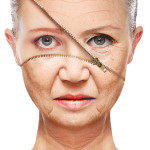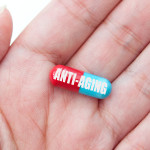By David Blyweiss, M.D., Advanced Natural Wellness
April 8, 2022
It wasn’t that long ago that red light therapy was something you could only find at dermatologist offices and luxury spas.
The claims were that it could make skin firmer and reduce fine lines to make you look younger. It could fight off eczema, psoriasis, rosacea and other skin problems. It could regenerate and repair aging skin.
Needless to say, there were a lot of skeptics. It sounds like snake oil, right?
But keep this in mind. Light affects our bodies more than most people realize.
Our biological rhythms are set by the sun. Sunlight stimulates the production of vitamin D. It increases our levels of nitric oxide, which is critical to ensure health blood flow to the heart, brain and other organs. It modulates our brain chemicals and hormones.
It’s good for us… unless we get too much of it.
While blue light from the sun is necessary for life, today we’re getting too much artificial blue light from our smartphones and other electronic devices. It damages the retina. It prematurely ages your skin. It suppresses melatonin production and makes it hard to sleep.
MD Exposes the Hidden Danger to Your Eyes

When your eyesight starts to fail, it's a real problem. Suddenly you can't go to the grocery store... you can't get to the doctor if you have an emergency... you can't meet your friends for dinner…
Your "regular" doctor doesn't have time to keep up with the latest research. And the same goes for eye doctors. They go to school to learn how to fit you for glasses and contacts, but have no way of preventing the damage and loss of eyesight that threatens your freedom and independence.
Let me show you something that explains a LOT about how your eyes work.
In my FREE Special Report, I'll show you a HUGE, untapped resource for your eyes that safely and naturally restores clear, effortless eyesight.
Click here to get started...
And what about red light?
Change the Way Your Skin Ages
Twenty years ago, the use of low-level red light as an anti-aging therapy was relatively unheard of. But that doesn’t mean the therapy didn’t exist.
The effect of low-level red light on skin was discovered by accident back in 1967. A Hungarian physician by the name of Endre Mester was experimenting with the effects of “ruby” laser on skin cancer.
And while he didn’t cure cancer, he did discover that the treatment improved wound healing and enhanced hair growth.
The concept wasn’t widely accepted at the time. But since then, research into light therapy has grown by leaps and bounds
It turns out that low-level red light is absorbed by the mitochondria. These are like mini power plants in your cells that are responsible for energy production. Your cells soak up this energy up and use it to promote new cell growth and repair skin. This helps…
- Give skin more strength and elasticity.
- Make more collagen and plump your skin up.
- Reduce fine lines and wrinkles.
- Improve age spots, scars and sun damage.
- Smooth the texture of the skin.
- Improve eczema, psoriasis, rosacea.
- Aid in wound healing.
So yes! All of those claims made by dermatologist offices and luxury spas were correct.
What Else Can Red Light Therapy Do?
Red light therapy might also help you grow more hair. It helps hair follicles move out of the resting phase and into the growing phase. This increases the thickness of hair and, in one study, the thicker hair was also more pigmented.
Because of the way red light works with the mitochondria, it can also be helpful when it comes to easing some of those aches and pains. It works by reducing inflammation, improving blood flow and increasing oxygen delivery to tissue.
Are You Suffering From...
- Love handles and a pot belly
- Romance that isn't what it used to
- Forgetfulness and inattention
- Low (or no) strength and endurance
- A sex drive that's shifted into neutral...or worse
If so...you may have Mature Male Burnout. Click here to discover more about this unique condition and what you can do about it.
In fact, it’s so effective at healing and regenerating damaged tissue that some question if the use of it should be banned in athletic competitions.
The nice thing is that these days, you don’t have to shell out a lot of money and go to weekly appointments to gain the benefits of low-level red light therapy. The technology has advanced enough that you can buy affordable LED red light devices that you can use in your own home.
These lights don’t contain any ultraviolet light and won’t hurt you. If you can find one that’s not too expensive and has the right wavelengths, you should get it and use it every day.
Wavelengths of 660 nm red or 850 nm infrared LEDs (or a combination of the two) will provide the best results. (The 660 nm is best for reducing signs of aging, while 850 nm penetrates deeper for muscle recovery and joint pain.)
I have one that I use about five minutes a day to support the healthy growth of my skin and hair. And I have to say, it’s helped me keep a thick head of hair at my age.
SOURCES:
Arjmandi N, et al. Can Light Emitted from Smartphone Screens and Taking Selfies Cause Premature Aging and Wrinkles? J Biomed Phys Eng. 2018 Dec; 8(4): 447–452.
Zhao ZC, Zhou Y, Tan G, Li J. Research progress about the effect and prevention of blue light on eyes. Int J Ophthalmol. 2018;11(12):1999-2003.
Tafur J, Mills PJ. Low-intensity light therapy: exploring the role of redox mechanisms. Photomed Laser Surg. 2008;26(4):323-328.
Hamblin MR. Photobiomodulation or low-level laser therapy. J Biophotonics. 2016;9(11-12):1122-1124.
Wunsch A, Matuschka K. A controlled trial to determine the efficacy of red and near-infrared light treatment in patient satisfaction, reduction of fine lines, wrinkles, skin roughness, and intradermal collagen density increase. Photomed Laser Surg. 2014 Feb;32(2):93-100.
Huang A, Nguyen JK, Jagdeo J. Light-Emitting Diode-Based Photodynamic Therapy for Photoaging, Scars, and Dyspigmentation: A Systematic Review. Dermatol Surg. 2020 Nov;46(11):1388-1394.
Sorbellini E, De Padova MP, Rinaldi F. Coupled blue and red light-emitting diodes therapy efficacy in patients with rosacea: two case reports. J Med Case Rep. 2020;14(1):22.
Zhang P, Wu MX. A clinical review of phototherapy for psoriasis. Lasers Med Sci. 2018;33(1):173-180.
Chaves ME, Araújo AR, Piancastelli AC, Pinotti M. Effects of low-power light therapy on wound healing: LASER x LED. An Bras Dermatol. 2014;89(4):616-623.
Lanzafame RJ, Blanche RR, Chiacchierini RP, Kazmirek ER, Sklar JA. The growth of human scalp hair in females using visible red light laser and LED sources. Lasers Surg Med. 2014 Oct;46(8):601-7.
Lanzafame RJ, Blanche RR, Bodian AB, Chiacchierini RP, Fernandez-Obregon A, Kazmirek ER. The growth of human scalp hair mediated by visible red light laser and LED sources in males. Lasers Surg Med. 2013 Oct;45(8):487-95.
Leavitt M, Charles G, Heyman E, Michaels D. HairMax LaserComb laser phototherapy device in the treatment of male androgenetic alopecia: A randomized, double-blind, sham device-controlled, multicentre trial. Clin Drug Investig. 2009;29(5):283-92.
Walski T, Dąbrowska K, Drohomirecka A, Jędruchniewicz N, Trochanowska-Pauk N, Witkiewicz W, Komorowska M. The effect of red-to-near-infrared (R/NIR) irradiation on inflammatory processes. Int J Radiat Biol. 2019 Sep;95(9):1326-1336.
Stelian J, Gil I, Habot B, Rosenthal M, Abramovici I, Kutok N, Khahil A. Improvement of pain and disability in elderly patients with degenerative osteoarthritis of the knee treated with narrow-band light therapy. J Am Geriatr Soc. 1992 Jan;40(1):23-6.
Ferraresi C, Huang YY, Hamblin MR. Photobiomodulation in human muscle tissue: an advantage in sports performance?. J Biophotonics. 2016;9(11-12):1273-1299.







